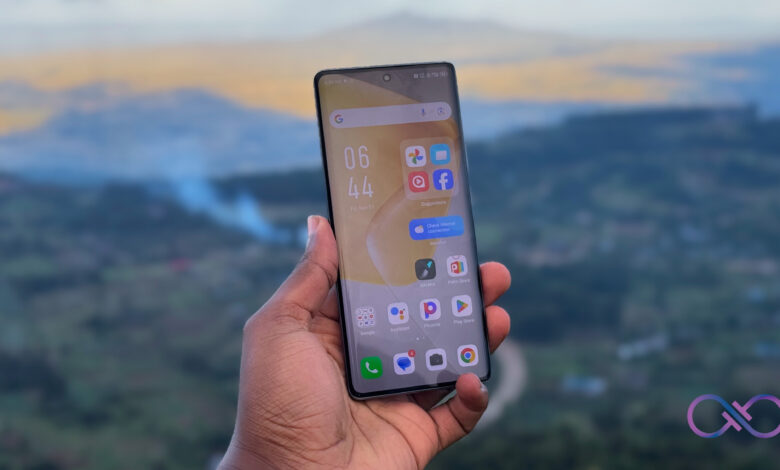
The global pre-owned smartphone market reached a pivotal moment in the first half of 2025, revealing a “great divide” between surging emerging economies and stagnant mature ones. According to comprehensive analysis from Counterpoint Research, the worldwide refurbished market grew by a modest 3% year-on-year. This headline number, a deceleration from previous periods, masks a far more complex story.
While mature markets like the United States, Europe, and Japan saw flat growth hovering around 1%, emerging regions—led by Africa, India, and Southeast Asia—collectively expanded at approximately 4%, signaling a major rebalancing of global consumption. A critical technological milestone was also reached: 5G-enabled smartphones captured 57% of global refurbished sales, a 65% year-on-year increase, proving the secondary market is successfully transitioning to recent-generation technology.
Emerging Markets: The New Growth Engine
The story of H1 2025 is one of emerging market dynamism, driven by formalization and a powerful “premiumization” trend.
Africa led the world with 6% year-on-year growth. This expansion was fueled by the rapid formalization of previously unorganized sales channels and powerful consumer demand for premium used devices, especially iPhones. Government-backed initiatives like “Bridge by Digital Africa” helped professionalize the ecosystem, supporting players like Kenya’s Badili. Apple saw 7% growth in the region, solidifying its status as the aspirational brand.
India, the second-fastest-growing market at 5%, exemplified the premiumization trend. Refurbished Apple sales surged an incredible 19% year-on-year, with iPhones accounting for nearly 63% of all refurbished sales. Tellingly, the premium segment (₹60,000+) grew 33%, as consumers sought high-end models like the iPhone 14 Pro over new mid-range devices.
Southeast Asia also expanded by 5%, fueled by a massive unorganized sector and the rise of consumer-to-consumer (C2C) digital platforms like Carousell. Apple dominated with 50% market share, growing 15% as consumers embraced the convenience and trust of online C2C transactions.
Mature Markets: Stagnation and Structural Headwinds
In sharp contrast, mature economies grappled with saturation, regulatory pressures, and economic uncertainty.
The United States market grew by only 3%, marked by volatility. Retailers maintained abnormally high inventories in response to tariff uncertainty, particularly the 10% levies on Chinese goods implemented in March 2025. With replacement cycles extending, trade-in programs from carriers and OEMs became the most critical source of supply.
Europe was the most constrained region, registering a mere 1% growth. The market was squeezed by profitability challenges and the implementation of the EU’s new ecodesign regulations. Effective June 2025, these rules mandate strict durability (ability to withstand 45 drops), battery longevity (80% after 800 cycles), and 7-year spare part availability, imposing significant compliance costs on refurbishers.
Japan remained relatively flat with 1-5% growth. Its market stability is unique, supported heavily by carrier-backed certified pre-owned (CPO) programs from giants like NTT Docomo and SoftBank, which build consumer trust through official warranties and certification.
Key Drivers Reshaping the Global Landscape
Beyond the regional divide, three global trends defined the H1 2025 market:
- Premiumization Goes Mainstream: The refurbished market is no longer just a budget play. Affluent consumers are now a core demographic, seeking premium-tier devices like the iPhone 13 and 14 Pro models to access flagship features at a significant discount.
- A Tech and Inventory Shift: The dominance of 5G (57% share) shows consumers demand recent technology. Concurrently, “As Is” devices—units sold without full refurbishment—grew 10% as cost-conscious buyers and sellers bypassed costly repairs to reduce prices. Apple’s iPhone 13 and 14 series dominated sales, while Samsung’s performance was mixed, seeing declines in India and Southeast Asia despite aggressive trade-in programs.
- Formalization and Sustainability: In Africa, organized retailers are providing warranties and verification, building consumer confidence. In Southeast Asia, C2C platforms are enabling trusted digital transactions, replacing informal street vendors. This, combined with a growing consumer and corporate focus on the circular economy and sustainability, is professionalizing the entire secondary market.
Conclusion
The first half of 2025 solidified a fundamental rebalancing of the global smartphone ecosystem. While mature markets stagnate under regulatory and economic pressure, the future of growth for the pre-owned industry lies squarely in emerging markets. The combination of aspirational demand for premium brands, the rapid formalization of sales channels, and the mainstream adoption of 5G technology has created a new, dynamic engine for the circular economy.







